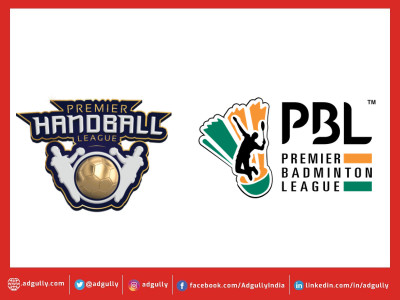Industry experts decode the growth of non-cricket sports in India
Cricket dominates Indians’ hearts and minds – there are no two ways about it. Be it the World Cup tournaments, IPL extravaganzas, series with international teams – cricket is never short of fans, viewers and advertising monies.
However, in recent times, non-cricket sports like football, kabaddi, badminton, wrestling, boxing and even golf and F1 racing have started making inroads into fans’ hearts. With this, advertiser interest has grown as well and these sports today see big brands supporting them as sponsors.
According to GroupM’s ESP and SportzPower report, the Indian sports sponsorship market grew at 19.33 per cent in the year 2016 to reach Rs 6,400 crore. The report noted that both cricket and non-cricket sports contributed to this growth.
Adgully spoke to a cross section of sports broadcasters as well as media industry leaders to have an understanding of the growth of the non-cricket sports business in India – the growth in fan base, viewership, sponsorship money. The industry experts also gave their views on the steps needed to attract new viewers, the role of Tier 2 & 3 markets and much more…
Factors to keep in mind by broadcasters while marketing and packaging non-cricket sports properties in order to attract more eyeballs
TS Panesar, President, DSport, remarked that while cricket was and shall remain the sport that binds the country together, but one should not miss out that Indians today are also eager to experience triumph in other sports as well. “Hence, slowly but steadily we are turning into a multi-sports country,” he said.
Adding further, Panesar said, “Given the increase in demand for varied content, we believe a significant impetus is required to understand the consumption pattern of our audience and hence, specialised genres and content, which will be the way forward in the sports broadcasting industry.”
According to Rajesh Kaul, President, Distribution and Sports Business – Sony Pictures Networks India, “Customisation of content plays a vital role in packaging and marketing sports content. At EPSN, we have a diverse portfolio of properties across cricket, football, combat sports, wrestling, tennis, golf, basketball and more. Our on-air campaigns have been designed to strike a chord and echo the sentiments of sports fans, inspiring millions in the country to embrace the sports with open arms.”For Anita Nayyar, CEO, India and South East Asia, Havas Media, some factors include advertising time versus live coverage, ad options other than only FCT and promotions basis interest mapping of audience in a particular state/region, which will make a difference.
Ashish Bhasin, Chairman & CEO, South Asia, Denstu Aegis Network, too, pointed out that several sporting events had come up in the last few years, like Badminton League, Pro Kabbadi and many more. “According to Denstu Aegis Network study, roughly 82 per cent of all sports related spends revolving around advertising, sponsorship and other spends come from cricket, which clearly notifies that for every Rs 100, Rs 18 rupees is kept for other sporting events. This proportion hasn’t changed yet because cricket has its own skew in a country like India. Having said that, people have started occupying the niche category by doing ads. However, even if we put this niche category sporting events together, they will roughly cover 20 per cent, while the remaining is still ruled by cricket,” he noted.
Role of Tier 2 & 3 markets in driving no-cricket sports viewership in India
SPN’s Kaul remarked, “Tier 2 and 3 are significant markets for a sports broadcaster. Cricket, football, basketball as well as wrestling have huge viewership in these markets. In these markets, our content is also customised via regional language feeds, supported by regional campaigns in Tamil, Telugu, Bengali, Hindi and Malayalam.”
Anita Nayyar, too, agreed that there is higher acceptability of other sports like kabbadi, football, badminton, etc., in the Tier 2 and 3 markets as these sports are also played by the audiences in these markets. Also there is higher audience presence in smaller towns. And with BARC coverage increasing, weightage of these towns is more significant.DSport’s TS Panesar observed that India has slowly and gradually developed into a multi-sporting nation. Multi discipline sporting extravaganzas like the Olympics along with FIFA World Cup, Global Badminton tournaments, Motor Sports, Wrestling, Boxing, Tennis Grand Slams, Egames, etc., are all important sporting stopovers for sports fan today and that in itself is the biggest proof of the multi-sports culture having picked up in India now. He further said, “Tier 2 and 3 markets have also become very important. Having said that, it is not only about the Tier 2 and tier 3 markets rather it is more about the overall ecosystem. Look at the domestic leagues, there’s a sport for each and every family member, for each fan out there, and everyone wants the best action and analysis and that’s how dynamic and competitive the sports broadcast market is today in India.”
Bhasin, on the other hand, maintained the biggest sports viewership comes from cricket as it is a universal game. It is equally popular in big cities and Tier 2 and 3 markets. They have contributed large amount of numbers because there’s a lot of viewership coming in from these markets.
Do’s and Don’ts of growing the non-cricket sports space in India
According to Rajesh Kaul, sports properties are etched in the hearts of millions partly due to the following of heroes such as Sachin Tendulkar and Virat Kohli for cricket, Cristiano Ronaldo and Messi for football and Stephen Curry and LeBron James for basketball, to name a few. It is important to spread awareness and create loyalty for top athletes to occupy the minds of the Indian audience. Additionally, localisation and customisation of content takes it closer to the masses and also intensifies the interest around the sport. Additionally, when marquee international properties like FIFA events, Asian Games or Commonwealth Games are hosted in India, they bring the audience closer to the most celebrated sports stars and athletes.
Bhasin asserted that one should recognise the fact that at least for the coming decades the other sporting events will play a secondary roled to cricket. He added, “The focus should be on how you are monetising for a particular sport or event, because only if you make money you can invest and make more money. One of the reasons for the success of BCCI and cricket in India is that they have sufficient resources, whereas for the other the new Leagues that are entering the fray, the first focus should be how to monetise it so that they get enough money for the future betterment and growth of that sport.
Adding to this, Anita Nayyar said, “Do keep focus on promoting the game and players and on building awareness and entrenching interest instead of concentrating on modifying and packaging along the lines of an IPL or something else. This can be done at a later stage, and definitely don’t over commercialise the game.”
DSport’s Panesar remains more positive on the growth of no-cricket sports and pointed out that high quality live action with quality analysis was what sports fans wanted, and the sports broadcasting industry had to deliver that first. “While the broadcasting quality seems to have improved considerably, what still lags behind for non-cricket sports is that qualitative level of analysis. The analysis is the key for fans and for them to stick around watching the sport. So, I think proper research with quality production and good summarisation through analysis and commentary is the most critical requirement for any sports broadcaster, be it cricket or non-cricketing properties,” Panesar pointed out.
The competitive factors in play
For Panesar, one of the major competitive factors that have come into action in the last few years is the digitisation of the content. People want to catch the action on the go. Hence, all the broadcasters are looking forward to making more digital content available to their audiences. Secondly, there is a multitude of international and domestic leagues that have come to the forefront in the last 5 years, and now understanding the target group and generating content to suit their needs has become very important and that is what all broadcasters are looking to achieve.
According to Anita Nayyar, cricket for sure is the competitive factor. Also, amongst non-cricket sports, soccer, wrestling and kabaddi are gaining ground. Amongst these, they all compete with each other as they are all in the non-cricket domain.
How media planners view non-cricket sports as advertising opportunities for their clients
For Nayyar, given the attractive pricing and increasing viewership, these sports are becoming more popular opportunities for advertisers and hence, growing.
Ashish Bhasin, too, pointed out that money follows eyeballs. “The moment media buyers will see the numbers and the cost efficiency of the sports, they will invest in it. Majorly, cricket has beaten them to it because it has naturally grown across masses,” he added.
Cricket still leads the roster as far as fan following is concerned, but over time India has slowly graduated to becoming a multi-sport nation. According to Panesar, media planners now follow each and every sports league or event that is coming to India, which has completely changed the media-planning calendar as each new sport that is being conducted on a large scale in the country is an opportunity for the broadcasters.













Share
Facebook
YouTube
Tweet
Twitter
LinkedIn